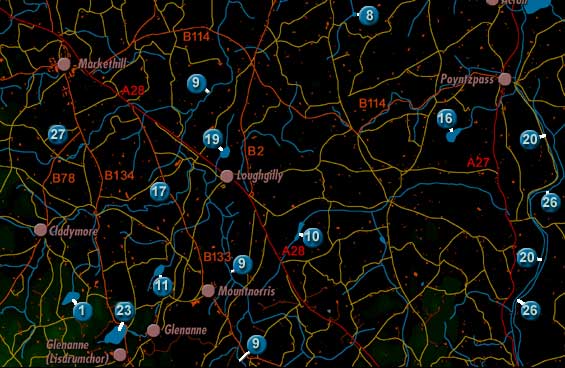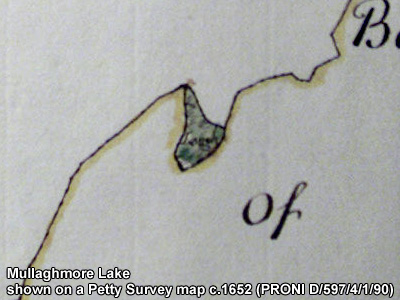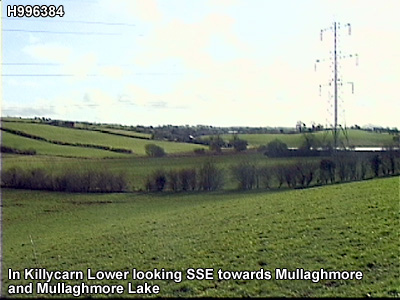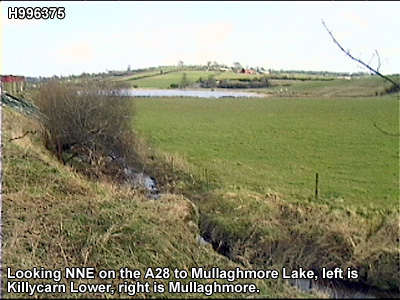
MULLAGHMORE LAKE is labelled 19 on the map. It is South East of Markethill, above Loughgilly. .




The naturalist Robert Lloyd Praeger described discovering Carex rhynchophysa (greater bottle-sedge) at Mullaghmore Lake in an article "A new Irish sedge" in The Journal of Botany, 1893, vol. 31, pp. 33-35:
"The circumstances connected with the discovery of this plant in Britain were attended by a rather humorous scene, which I trust it will not be considered heresy to relate in the grave and strictly scientific pages of this Journal. On August 14th last I was botanising along the marshy shores of Mullaghmore Lough, a lakelet occupying a shallow hollow in the Lower Silurian or Ordovician rocks that cover the central portion of the county of Armagh. Tall plume-like tufts of Cicuta grew around, and the numerous bog-holes were spangled with the white flowers of Nymphaea. Presently my eye was caught by a patch several feet in diameter of a large sedge, growing in the centre of a deep drain some ten feet in width, which communicated with the waters of the lake. It was immediately distinguished from the groves of Carex rostrata which grew around by its taller growth and more glaucous leaves. It grew in between two and three feet of water, the total height of the plant being about four feet. How to get at it was the difficulty. The bottom of the drain was soft, deep mud. The sides were soft peat, I stretched over and examined the clump with my stick. A single fruit-stem was disclosed, much shorter than the leaves, and bearing several stout sessile erect spikes of fruit, with long leaf-like bracts. I again and again tried to hook it in with my stick, but unsuccessfully-tantalizing! Meanwhile, my eccentric movements had attracted the attention of the inhabitants of the immediate neighbourhood. A small boy who had been lying half-asleep under a hedge sat up and stared with all his might at this novel fishing. The cows which he was herding approached cautiously, and stood mystified in a semicircle. A flock of ducks hurried in from the lough to see what was up, and paused within a few yards, expressing their curiosity in loud quacks of enquiry. All was excitement and suspense. Ah! I had got the sedge safely hooked this time. Slowly it was drawn towards the bank, and my hand closed on the stem. Then came the denouement. The edge of the bank suddenly gave way. There was a frantic spring, and then a huge splash. The ducks gave one universal quack, and fled from the scene with a prodigious flapping; the cows kicked up their heels, and scattered precipitately; the small boy, convinced that the water-bogie was after him at 98 M. J. P. Scannell last, fled from the spot in terror; and the botanist emerged, dripping with mud and water, but clutching firmly in his hand the first British specimen of Carex rhynchophysa !